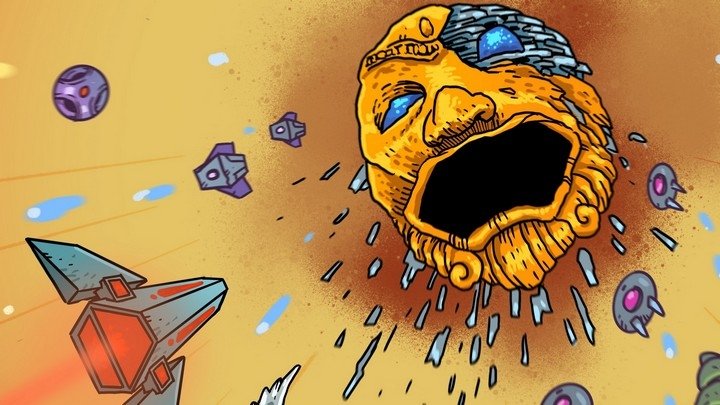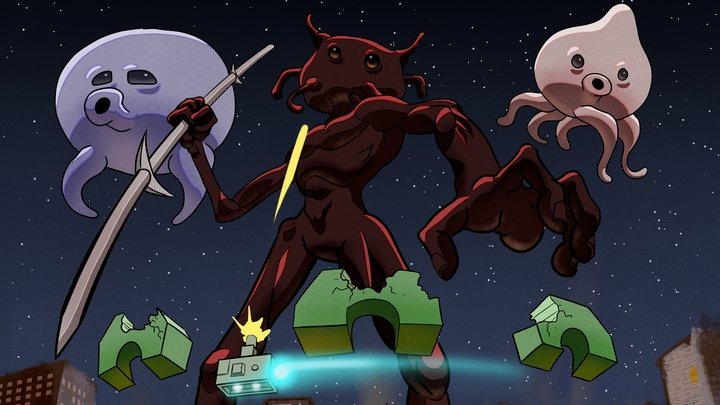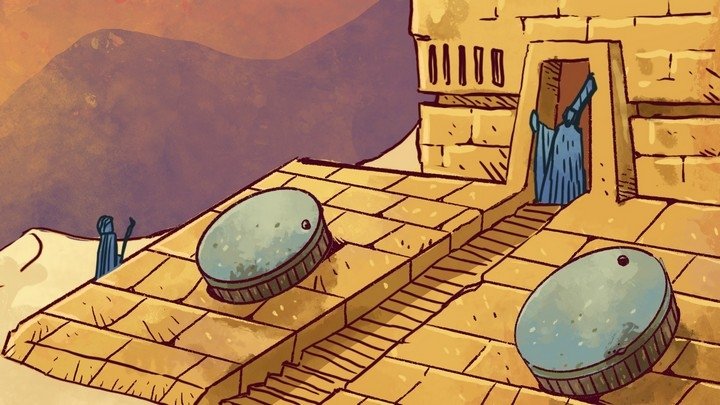To shmup legend IKD, a very HB
Today is a holiday for fans of shoot-'em-ups worldwide: It's Tsuneki Ikeda's birthday!
For over a decade after Taito released Space Invaders in 1978, shoot-'em-ups dominated the arcade scene. Every company worth their salt at least dabbled in the genre, and it wasn't unusual for one to have multiple series going at the same time. People simply had to have their shmups: Heavy hitters like Capcom, Konami, Data East, and of course Taito inundated the market with one after another, and even then there was room for smaller outfits like NMK and Video System to carve out a niche for themselves as well. Toaplan, who fit into the latter category, were notable not only for the sheer volume of their output—rolling out shmup after shmup for years—but their consistent quality. In this fast-paced environment, many of their games made a strong enough impression to earn console ports and even direct sequels.
Unfortunately, the '90s brought rapid changes to the genre landscape, with the mighty shmup ousted by a glut of beat-'em-ups and fighting games chasing the success of Final Fight and Street Fighter II, respectively. Toaplan, who had made their name doing one thing very well, struggled to adapt...and this is where our man Ikeda enters the picture. Joining Toaplan in 1992, he contributed programming to two of their final shmups, V・V (pronounced "Vee Five") and Batsugun, before the company folded in '94. But the spirit of shooting games was too strong to die with Toaplan, and that same year, Ikeda co-founded one of four new developers who arose to carry on its legacy. There was Raizing, who produced the long-running Mahō Daisakusen series (culminating in the cult classic Dimahoo); Takumi, who made Mars Matrix and the Giga Wing series under the auspices of Capcom; Gazelle, an existing company who made Air Gallet once ex-Toaplan staff joined; and Ikeda came up with a little company called Cave.
 Dodonpachi can display up to 245 enemy bullets on the screen at a time. Yes, of course they counted!
Dodonpachi can display up to 245 enemy bullets on the screen at a time. Yes, of course they counted!
While Raizing developed many of their games on the same hardware used by Toaplan in their later years—and Capcom let Takumi play on the boogie board that was the CP System II—Ikeda spent his first year at Cave working on a new framework that would run the games they'd make for the rest of the '90s: the CAVE 68000. (Being family and all, the Air Gallet team at Gazelle used Cave's board before merging ranks with them entirely.) For Cave's debut performance, 1995's Donpachi, Ikeda entered a dual role he would keep for years to come, serving as both a programmer and a designer. Drawing upon his experiences as both a developer and a shmup fan from way back, he set out to guide the player's experience right down the line between brutal challenge and intense excitement. With this goal in mind, he meticulously orchestrated the patterns of enemies that would assault the player—and yes, the waves of bullets that showered over them.
More than anything, Ikeda simply desired to keep on making the games that Toaplan might have if they were still around, but that all changed in 1996, when Raizing released a little shmup called Battle Garegga. This game demonstrated what at the time was considered an irresponsible lack of restraint when it came to coating the screen in bullets, and here Ikeda realized his new calling. In 1997, Cave released Dodonpachi in direct answer to Battle Garegga, lowering the helpless player into what would become known as "bullet hell."
https://twitter.com/h1l34ch1/status/864764397012434944
In their heyday, shmups enticed casual players as well as die-hards with their escalating production values. Then Final Fight and Street Fighter II lured the public away from spaceships and war machines with vivid human characters. The advent of bullet hell helped restore shmups to mainstream attention with an obvious visual hook: "Just look at all those bullets!" In turn, it emphasized the underlying mechanical hook that had always been there: the simple, visceral thrill of weaving your way through death on all sides. As the harbinger of a new sub-genre, Dodonpachi became a massive success, and Ikeda dreamed of leading a shooting revolution that would return shmups to their former glory.
Ultimately, shmups couldn't get out from under the stigma surrounding their imposing difficulty, so they remained in a niche, much to Ikeda's chagrin. But the faithful, whose high-level technical play had constantly moved developers to increase the games' challenge in the first place, flocked to Cave as their saviors. And Ikeda, who went on to meet their demands time and again, became lauded as the genre's devoted steward and the architect of a new age—affectionately referred to as "IKD."
Cave has finally begun to slow down in recent years, but Ikeda remains in high esteem, as evinced by the birthday wishes flooding Cave's Twitter today. And although he's twenty years older now than when he made Dodonpachi, he can look back on two decades spent keeping a dream alive.
Dodonpachi and Ketsui Death Label images courtesy of Hardcore Gaming 101




